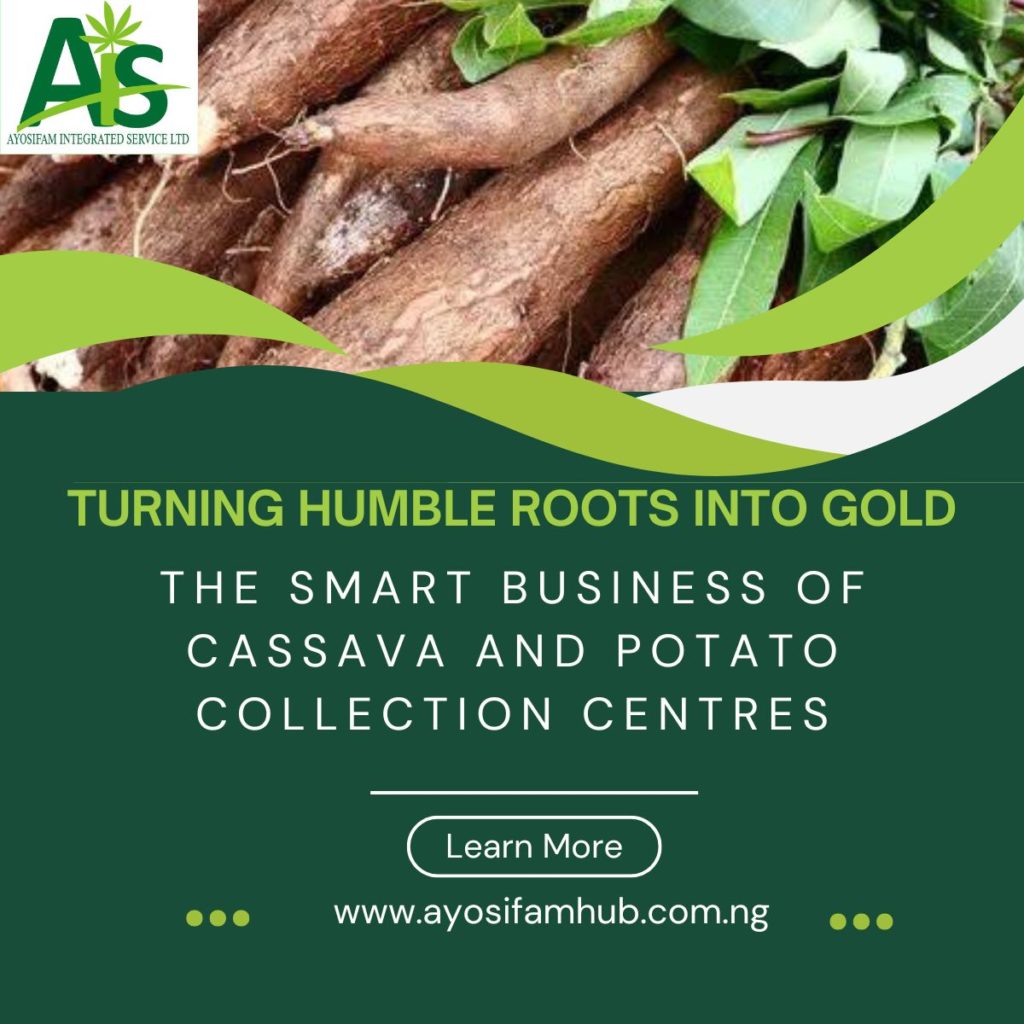Imagine a simple yet powerful solution to the persistent challenge of post-harvest losses plaguing our hardworking cassava and potato farmers. Picture a bustling hub, a collection centre, where farmers can readily bring their freshly harvested crops, assured of a fair price and a direct link to eager buyers. This isn’t just a pipe dream; it’s a smart, low-capital venture with the potential to generate cool cash for individuals, boost local government revenue, and empower transporters, all while significantly improving farmers’ livelihoods.
The beauty of establishing a cassava or potato collection centre lies in its elegant simplicity. The primary initial investment is securing a modest space, perhaps a rented shed or a small plot of land, where farmers can conveniently drop off their produce. This eliminates the often arduous and costly process of individual farmers seeking out buyers, navigating fluctuating market prices, and risking spoilage during the search.
The operational model is equally straightforward. The centre manager acts as a crucial intermediary, overseeing the collection, sorting (if necessary), and weighing of the crops. Buyers – processors, wholesalers, or even large-scale retailers – then come directly to the centre to purchase the aggregated quantities. The manager earns a small commission on every kilogram or bag of cassava or potato sold. This ensures a steady income stream directly tied to the volume of transactions, incentivizing efficiency and growth.
The benefits extend far beyond the individual manager. Local Government Authorities (LGAs) stand to gain through potential licensing fees, market levies on the transactions, and the overall economic stimulation within their jurisdiction. The increased trade activity can lead to more vibrant local economies and potentially higher tax revenues.
Furthermore, transporters play a vital role in this ecosystem. As buyers flock to the collection centers, the demand for transportation services to move the crops from the farms to the center and then to the final markets naturally increases. This creates employment opportunities and boosts the income of local transporters.
Most importantly, this model directly addresses the critical issue of post-harvest losses. By providing a readily accessible point of sale, farmers can offload their produce promptly, minimizing spoilage and the associated financial setbacks. This increased efficiency translates directly into higher income for the farmers, encouraging greater productivity and investment in their farms. They are empowered by having a reliable market outlet, fostering economic stability and growth within the agricultural sector.
In conclusion, establishing a cassava or potato collection center presents a remarkably intelligent and accessible pathway to generating income. With minimal initial capital, it creates a win-win situation for all stakeholders: a steady income for the manager, increased revenue for the LGA, opportunities for transporters, and, most significantly, a reduction in post-harvest losses and a boost in income for the very backbone of our communities – the farmers. This simple yet effective model has the potential to transform local agricultural economies, turning humble roots into genuine gold for everyone involved.




